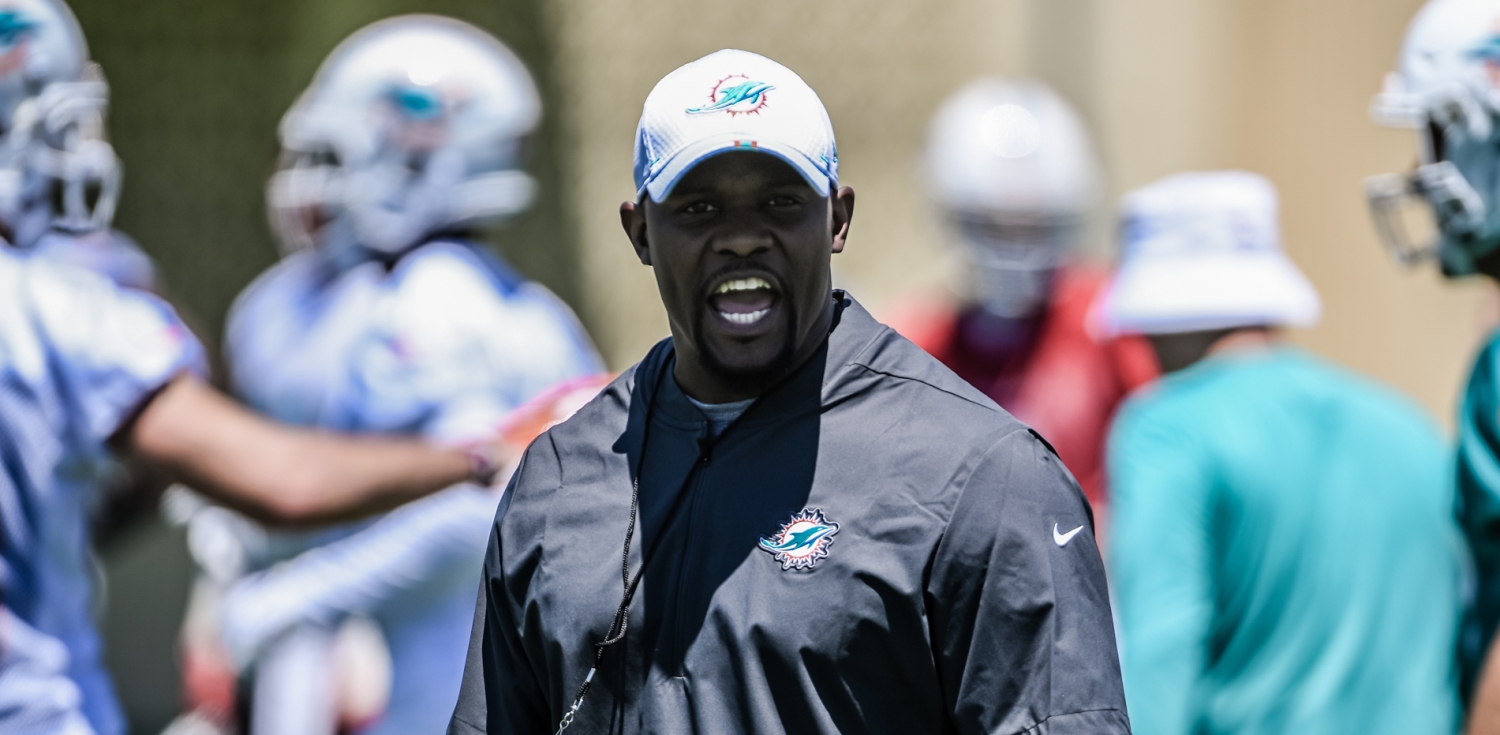Pressure Point: Dolphins’ draft will take time to gel
Look beneath the joy of the Miami Dolphins landing Tua Tagovailoa, who they hope finally becomes the franchise quarterback they’ve been seeking, and what stands out from their very active 2020 draft is this:
Winning NFL teams aren’t built in a day. Not in an offseason. Not in a single draft, even when you have an inordinate number of picks as Miami did.
The Dolphins came out of it with an intriguing haul of talent. They made some inspired choices that may provide a foundation for success that has eluded this woebegone franchise for too long.
But don’t expect this crop of rookies to step onto the field as an instant playoff contender.
There has been an expectation evident in fans chatter that because they had amassed so many draft picks, including three in the first round, and had oodles of salary cap space this offseason that winning will come quickly.
That certainly doesn’t appear to be the assumption of coach Brian Flores and GM Chris Grier.
Their approach to the draft said as much.
Beefing up the lines
After picking Tagovailoa, the remainder of their selections — there were 11 total after a couple of trades — were focused on building strength up front, fortifying the offensive and defensive lines.
It was a wise objective because that is the foundation of any winning team, and much needed for units that last season couldn’t open a hole for a running or stop an opponent.
They added three big bodies to each line in the draft. Three of the first seven picks were on the offensive line.
They also added to an already well-stocked defensive secondary, which is primary to Flores’ defensive scheme.
Upside defines the Dolphins’ draft class
The draft strategy suggests that Grier and Flores are viewing this as a two-year process. Next year, when they have two picks in each of the first two rounds, they can prioritize adding playmakers to Tua’s arsenal.
In this draft, the objective was clear and I admire how they stuck to it. They resisted the temptation of trading up for one of the touted running backs, and then landed an established NFL back, Matt Breida, from San Francisco for a fifth-round pick, a reasonable exchange.
Taking a stab at a projected 53-man depth chart for the Dolphins: pic.twitter.com/OpFFc99O9m
— Chris Kouffman (@ckparrot) April 25, 2020
Trades net more help up front
I liked the trades to move up for Georgia guard Solomon Kindley in the fourth round (No. 111 overall) and edge-rusher Curtis Weaver from Boise State in the fifth round.
The latter seems like a steal at No. 164. He had 34 sacks in three years, a Mountain West record. As a matter of comparison, that is 3.5 sacks more than No. 2 pick Chase Young had at Ohio State, though not suggesting Weaver is the player Young is.
Tackle/guard Robert Hunt also seemed like a laudable inspired pick in the second round. Hunt was a mauler for Louisiana and could immediately vie for a starting job in Miami.
Experts differ greatly in their views on USC tackle Austin Jackson, the first lineman the Dolphins took at No. 18. He has great tools, but isn’t yet 21 and seems will require time to develop.
Meanwhile, it made sense to load up on big bodies — and defensive backs too — because not all of these players the Dolphins drafted will make it in the NFL. They never do.
Prior to the draft, Mike Sando of The Athletic presented an analysis showing that since 1993 only two teams have ever had more draft capital (based on a combined numeric value assigned to their picks) than the Dolphins took into this draft: the 2018 Browns and 1994 Colts.
The Browns came out of that draft with quarterback Baker Mayfield and some other productive players, but haven’t had a winning record in the subsequent two seasons. The Colts got Hall of Famer Marshall Faulk but not a lot of other impact from the ’94 draft.
Some choices questionable
Analysts are giving mixed reviews on the Dolphins’ picks. Some decisions were questionable. Such as, they could have had highly rated edge rusher K’Lavon Chaisson when they took Jackson, regarded as a project.
The oddest move was the trade down from 26 to 30 in the first round that netted Noah Igbinoghene, a converted wide receiver but unpolished at cornerback. He’s an impressive athlete but doesn’t seem like a first-round talent. Obviously, Flores has a plan for him.
Georgia tackle Isaiah Wilson, a hulking 6-foot-7, 350-pounder was there for the taking. He went No. 29 to Tennessee.
But through it all, Grier and Flores stuck to their convictions, and they drafted the type of players that fit Flores’ preference.
“I think at the end of the day, we want to bring good players onto this team who will work and compete,” Flores said after the first round. “There is a lot to learn. … let’s just take this one day at a time and hopefully if we can string good days together, we’ll see some of the fruits of that labor.”
Flores gets his kind of players
It is up to Flores to mold the newcomers, including veterans signed in free agency, into a winning combination. Don’t be surprised if there are struggles along the way, and temper expectations for next season.
Even for Tagovailoa, who is expected to spend time as an understudy to Ryan Fitzpatrick.
But given what Flores accomplished in coaxing five wins in the last nine games of 2019 from a threadbare roster, he has earned a vote of confidence. He will certainly have a lot more useful pieces at his command in season two.
Craig Davis has covered South Florida sports and teams, including the Dolphins, for four decades. Follow him on Twitter @CraigDavisRuns



Leave a Reply
Want to join the discussion?Feel free to contribute!